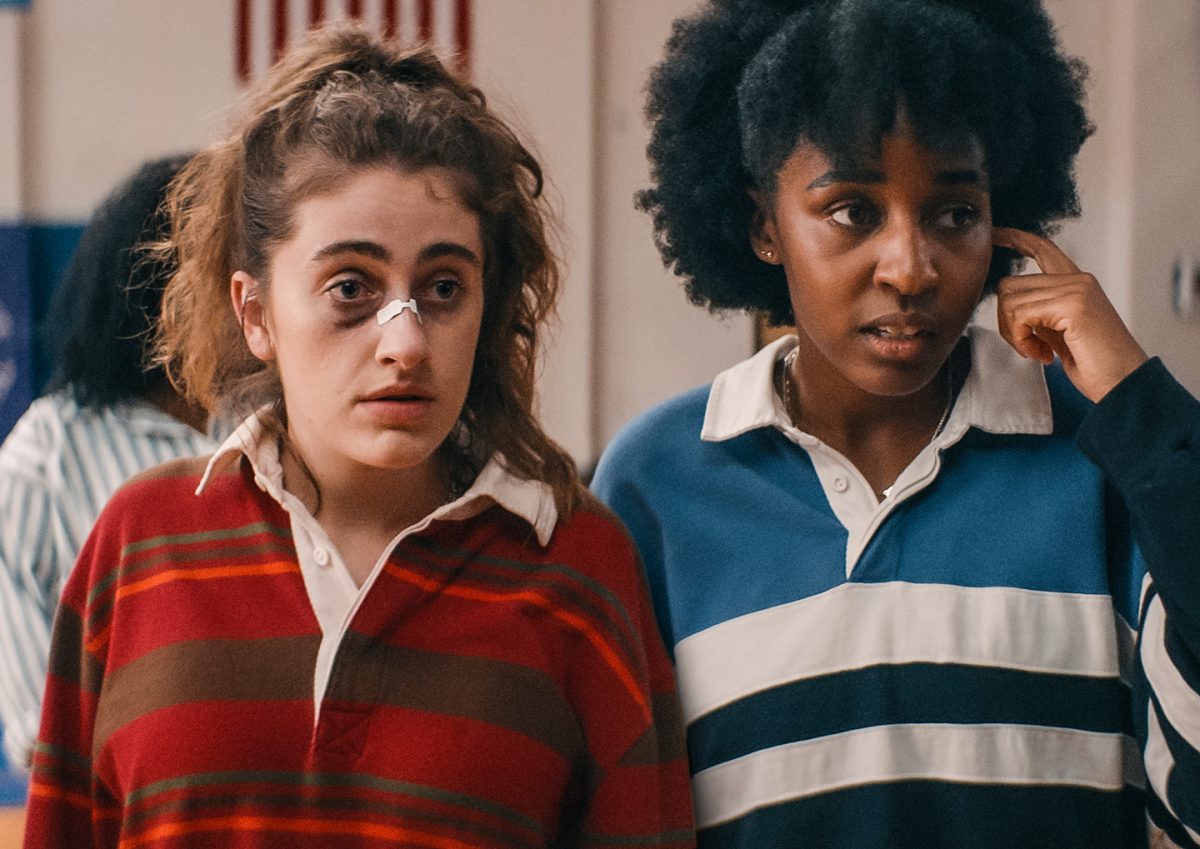In a summer filled with blockbusters, as well as controversy surrounding those blockbusters’ producers, one movie stands out. That movie is Bottoms, an indie comedy produced by the same people who brought you classics like Pitch Perfect and Cocaine Bear. You may know the director, Emma Seligman, from her 2020 film Shiva Baby, which starred Rachel Sennott, who plays a leading role in Bottoms as PJ. Ayo Edebiri, known for her role in drama series The Bear, plays Josie; Ruby Cruz, known for playing Kit in Disney’s Willow plays Hazel; Nicholas Galitzine, famous for his recent role as Henry in Red, White, and Royal Blue, starrs as Jeff. Although the faces of Bottoms are well known, the plot brings the movie to life.
We start out with best friends PJ and Josie getting ready for the school carnival where they hope to impress their crushes, Brittany and Isabel. Things are already complicated due to Isabel dating the star football quarterback, Jeff. However, Jeff and Isabel get into a fight, and PJ and Josie offer her a ride home. Unfortunately, Jeff blocks their car from pulling out of its parking spot. Josie finally gets enough courage to drive just an inch, slightly bumping into Jeff’s knee. Jeff reacts in extreme exaggeration: he gasps and falls to the ground, feigning a serious injury.
The next day, PJ and Josie are called into the corrupt principal’s office, where they are nearly expelled until PJ claims that they “attacked” Jeff purely for practice for their fight club. The principal lets them go, and PJ convinces Josie that the fight club might actually be a good idea; it could lead to them impressing Isabel and Brittany. Throughout the rest of the movie, chaos ensues, fights break out, but love and friendship prevails.
The movie itself is a satire on the classic high school movie, where the cheerleaders can be ruthless and the football players are evil. It depicts the obsession surrounding football and how school principals in these movies only care about their “star” students, who are usually male, handsome and athletic. The football players wear their jerseys around school, and they react to everything with extreme dramatics. Also, the classes are strangely short, which PJ notices near the beginning of the film.
Although Bottoms is an unserious film, the excitement around it is incredibly moving. Often, films with sapphic representation are sexualized and filmed with the thought of the male gaze behind it. “How can this movie about lesbians be catered to men and their fantasies surrounding women?” is often a question asked someway or another. But that’s not the only negative trope surrounding sapphic representation in films and TV. The “bury your gays” trope has been used for years, starting from the very first onscreen lesbian couple on TV. This trope surrounds the idea that the queer characters always die. Shows like Game of Thrones, The 100, Killing Eve, even the first lesbian couple on network TV, Tara and Willow from Buffy the Vampire Slayer. Movies like Brokeback Mountain, Lost and Delirious, and The Children’s Hour. And more often than not, TV shows depicting main characters and plotlines that revolve around sapphic characters are canceled after one or two seasons, for example, I am not Okay with this, Trinkets, A League of Their Own, The Wilds, and others. But Bottoms is different. Not only are the sapphic characters not sexualized, none of them die! They all experience a happy ending with some injuries and the possibility that most, if not all, of the girls in the fight club directly caused someone’s death. But that’s okay, as long as it wasn’t their own!
Even though it is a ridiculous farce, Bottoms is definitely a milestone in queer cinema and cinema as a whole. Indie films can be successful; queer films can be successful; films that don’t exploit or underpay their actors and writers can be successful. A new age of film is upon us, even if we are still working through the turmoil to get there. What Bottoms has shown is that you can still reach the top even if you’re at the bottom.

